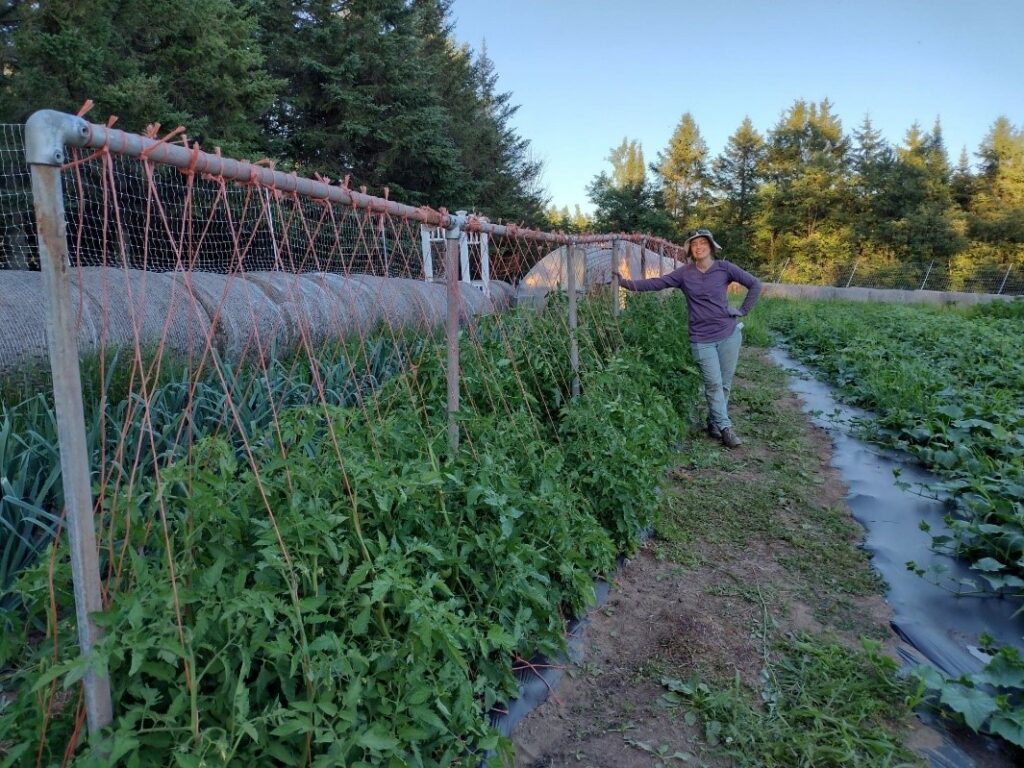The Value of a Good Compost Pile—Literal and Figurative

I’ve been writing lately in preparation for the launch of an upcoming Zoom course on design. The first chapter of the course focuses on the theme of “Developing the Designer’s Eye.” One of the essays has lovely overlap with farming and gardening, and even though my compost pile is still covered with deep snow, the warmer weather has me thinking on spring. Here’s an excerpt.
Tending a fertile creative practice is much like tending a garden. There are weeds of bad habits and overthinking to pull out, stones of self-doubt and self-sabotage to pick, and the tender shoots of ideas to foster on their journey of blooming. Such blooming happens with greater frequency and beauty when the soil is rich and loamy, filled with goodness of deeply decomposed humus.
That humus comes from the compost pile. Keeping a compost pile is neither glamorous nor pretty, but it’s an essential component of the work that is an art practice.
The task of composting is multi-faceted. There’s collecting the organic matter ingredients, which in our designer’s life could be images we like, colors we admire, that article a friend sent that was really interesting, our yarn stash, a favorite scarf. Compost pile work has a gathering aspect, but instead of taking it out in a heap in our back yard, our designer’s compost pile might manifest in a box full of collected bits of inspiration, a scrapbook, a file cabinet (physical or digital), a drawer, a treasure chest, or all of the above and more. We’re collecting inspiration, ideas, motifs, colors.
I have rabbit holes of files on my computer, where I’ve saved images that spoke to me. Finding them again can become a challenge amidst the warren, but they remain along the trails of inquiry, saved for later. I hop back on the scent of the trail, and there they are like little light posts reminding me of the journey to now.
After the collecting phase is the percolating phase. This means periods of rest for fermentation, followed by turning the compost pile for periods of oxidization. Letting it rest means that you aren’t actively milking your inspiration each day, begging it to make something for you. Letting it rest means giving the images and ideas time to access the subconscious, where it steeps and bubbles like a potent brew. Stirring the pot occasionally can help you find tasty bits you’d forgotten you had squirreled away many years ago, bringing forth new inspiration and insights. This way the fermentation is fruitful instead of moldy.
Unconsciously, many creatives do this already, which is why we don’t tend to have tidy, sparse homes. We tend to see the little everyday treasures of the world and save that interesting rock or piece of beach glass or bird feather or photo of the mountains at sunset. We save them because we found value in them. Collecting imagery is the food, the nitrogen that fuels the production of new imagery, reformed and rephrased through your creative lens.
As writer Natalie Goldberg expresses, one day, suddenly, your compost pile will sprout a beautiful flower. You can’t exactly say how it happened, but there it is—fruits of all your caring work of building and tending the compost pile. “Understanding this process cultivates patience and produces less anxiety,” she states in her pivotal book Writing Down the Bones. “We must continue to work the compost pile, enriching it and making it fertile so that something beautiful may bloom and so that our writing muscles are in good shape to ride the universe when it moves through us.”
Starting a compost pile can be very simple: Start with what you have. Do you stash away greeting cards? These can sometimes have beautiful motifs or colors worth collecting. Do you keep swatches or fun and colorful bits of the material of your choice? Have you collected images from artists you admire? These are all good fodder for your designer’s compost pile. Once you’ve made a thorough search of your squirrel stashes, keep an eye out for what is speaking to you. Clip out images from magazines you receive, flip through pictures you’ve taken, or sketch out what you see that inspires you.
As you turn your compost pile, when ideas arise, jot them down, make simple sketches, take notes. Not all flowers bloom very long, and not all ideas will wait for you to be ready. Taking a shower or driving down the road can be places where inspiration meets you. Pin down at least a corner of the idea so it can’t blow away and let the subconscious magic of the compost pile carry on making new inspiration. Just holding it in your head is a dangerous strategy, and the loss of a good idea you knew you once had is a tragedy that’s hard to shake. Budget for success—capture those ideas!
How does it work, this composting? Well, shining a bright light on the inner working of creativity isn’t always a productive endeavor. Suffice it to say that it’s not your cerebral cortex manufacturing ideas out of nothing. There’s a whole flow and movement of energy, of ideas seeking form, or form interlaced with stories and meaning, and of the longing of life to be seen, heard, felt, and understood deeply.
Let’s strap on our proverbial muck boots together, grab some garden spades, and head out to our compost piles!





